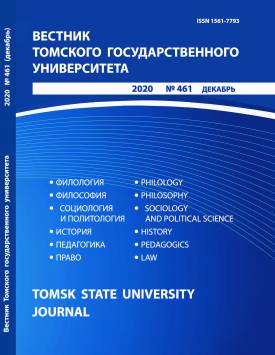North Asia in Contemporary Transregional and International Interactions
The article aims at determining the place of North Asia in the contemporary system of transregional and international interactions through the lens of political, socioeconomic, sociocultural and demographic factors. The authors give an overview of major theoretical and methodological approaches developed in foreign and Russian academic literature which focus on the interlinkages between the global and regional levels of the world system and the criteria of regional subsystems' delineation and classification. The analysis of early and classical attempts at applying the systems approach to the studies of international relations leads the authors to a focus on the regional security complex theory developed by Barry Buzan and Ole Waever in the 1990s-2000s. The categories and methodology of the regional security complex theory are the foundation of the authors' approach to the research problem. Relying on the official documents, statistics, and research literature, the authors analyze political, socioeconomic, sociocultural and demographic factors shaping the role of North Asia in the system of transregional and international interactions. As part of the Russian state, North Asia is encompassed by the post-Soviet regional security complex, also known as the post-Soviet regional subsystem. The post-Soviet system, along with the subsystem existing within and around the European Union, is part of the European supercomplex. However, the rise of tensions in Europe in 2013-2019 has pushed Russia to active policies in East Asia, transforming North Asia from a "deep rear" of the Russian foreign policy into a macroregion that is meant to become a springboard for the solution of crucially important strategic objectives of Russian foreign policy. At the same time, the major socioeconomic trend is North Asia's accelerating involvement into the Chinese field of economic gravitation. The sociocultural space of the macroregion undergoes transformations under the impact of migration flows from Central Asia. Seen against the backdrop of population growth in East and Central Asia, the ongoing depopulation of North Asia inevitably becomes a threat to the Russian state's ability to control the macroregion. In conclusion, the authors formulate the hypothesis about the inclusion of North Asia into the Asian supercomplex that comes into existence due to intensified interactions among the East Asian, the South Asian and the Central Asian subsystems. The socioeconomic factors are the main drivers accounting for North Asia's pivot to the Asian supercomplex, but this process also has political and sociocultural dimensions. Consequently, North Asia becomes a territory where two supercomplexes, European and Asian, overlap. The authors' hypothesis allows them to suggest five scenarios of North Asia's future positioning in the systems of transregional and international interactions.
Keywords
North Asia, regional security complex, post-Soviet regional system, Asian supercomplex, Eurasian Economic UnionAuthors
| Name | Organization | |
| Lijun Guo | Sun Yat-sen University | guolj5@mail.sysu.edu.cn |
| Troitskiy Evgeny F. | Tomsk State University | eft@rambler.ru |
References

North Asia in Contemporary Transregional and International Interactions | Vestnik Tomskogo gosudarstvennogo universiteta – Tomsk State University Journal. 2020. № 461. DOI: 10.17223/15617793/461/15
